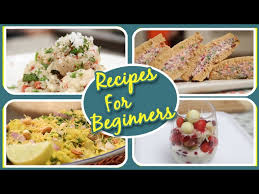How do I scale a recipe up or down?
Are you looking to impress your guests with a perfectly portioned dinner party dish or whip up a quick meal for one? Scaling recipes is the culinary magic that allows you to adjust serving sizes without sacrificing taste or quality. Whether you’re a cooking novice or an experienced chef, mastering the art of scaling recipes can elevate your kitchen skills to new heights. Join us as we dive into the world of recipe scaling and uncover all the tips and tricks you need to become a pro at resizing your favorite dishes!
Understanding the Importance of Scaling Recipes
Scaling recipes is more than just a math exercise; it’s a crucial skill that can make or break your cooking endeavors. Understanding the importance of scaling recipes allows you to tailor dishes to suit different occasions and preferences. Whether you’re hosting a dinner party, meal prepping for the week, or simply craving a smaller portion, being able to adjust recipe quantities is essential.
By scaling recipes accurately, you ensure that each ingredient is in perfect harmony, maintaining the intended flavor profile and texture. It also saves time and reduces food waste by preparing only what you need. Additionally, resizing recipes enables flexibility in your cooking routine, empowering you to experiment with different serving sizes without compromising on taste.
Mastering the art of scaling recipes opens up a world of culinary possibilities and empowers you to cook with precision and confidence. So next time you find yourself needing to adjust a recipe – fear not! With the right tools and techniques at your disposal, scaling will become second nature in your kitchen arsenal.
Factors to Consider Before Scaling a Recipe
Before diving into scaling a recipe, it’s crucial to consider a few key factors. Take note of the ingredients and their properties. Some ingredients may not scale linearly, such as leavening agents or spices. Assess the cooking techniques involved in the original recipe. Certain methods like baking can be more sensitive to adjustments in quantity.
Consider the equipment you have on hand for both the original and scaled versions of the recipe. Ensure your containers are large enough or that you have multiple pans if needed. Additionally, think about taste preferences – adjusting seasonings when scaling up or down is essential for maintaining flavor balance.
Time constraints play a role too; scaling up a recipe might require longer cooking times while scaling down could reduce them significantly. By keeping these factors in mind, you’ll set yourself up for success when adjusting recipes to suit your needs.
Tools and Techniques for Scaling Recipes
When it comes to scaling recipes, having the right tools and techniques can make the process much smoother. One helpful tool is a kitchen scale, which allows you to measure ingredients by weight for more accuracy. This is especially important when dealing with smaller or larger quantities.
Another technique is using ratios instead of specific measurements. By understanding the ratio of ingredients in a recipe, you can easily adjust them up or down based on your desired serving size. For example, if a recipe calls for 2 cups of flour and 1 cup of sugar in a 1:2 ratio, you can easily double or halve those amounts accordingly.
Additionally, keeping detailed notes and calculations as you scale a recipe can help ensure consistency and prevent errors along the way. And don’t be afraid to experiment and taste-test as you go – cooking is an art that often requires some trial and error!
Tips and Tricks for Accurate Scaling
When scaling a recipe, it’s crucial to be precise. One tip is to use kitchen scales for accurate measurements. These digital tools can help you adjust the quantities with precision. Another trick is to calculate ingredient ratios before starting. This ensures that all elements are proportionally adjusted.
Consider the impact of scaling on cooking times and temperatures as well. A larger batch may require longer cooking times, so make necessary adjustments accordingly. Try testing small batches first before committing to a large-scale preparation to fine-tune flavors and textures.
Don’t forget about flavor balance when multiplying or reducing ingredients. Spices and seasonings might need adjustment based on the volume of the dish. Keep notes throughout the process so you can replicate your successful scaled recipes in the future with ease.
Experimenting with different techniques will enhance your skills in scaling recipes effectively over time.
Common Mistakes to Avoid
When scaling a recipe, one common mistake to avoid is not adjusting cooking times accordingly. Just because you’ve increased or decreased the ingredients doesn’t mean the baking or cooking time remains the same. Be mindful of this to prevent undercooked or overcooked dishes.
Another pitfall to steer clear of is neglecting to taste as you go along when adjusting seasonings. As quantities change, flavors may need adjustment too. Don’t wait until the end to realize your dish lacks flavor depth.
Additionally, overlooking ingredient compatibility can lead to disastrous results. Some ingredients may not scale proportionally with others and could throw off the entire dish’s balance. Research ingredient interactions before making adjustments.
Don’t forget that precision matters when scaling recipes. Eyeballing measurements instead of using precise tools can result in inconsistent outcomes. Stick to accurate measurements for reliable results every time.
Resources for Finding Scaled Recipes
Looking for reliable resources to find scaled recipes? The internet is a treasure trove of culinary knowledge waiting to be explored. Websites like Allrecipes, Food Network, and Epicurious offer a wide range of recipes that can easily be adjusted to suit your needs. Additionally, food blogs by professional chefs and home cooks often provide detailed instructions on how to scale up or down their creations.
Don’t forget about social media platforms like Pinterest and Instagram where you can discover visually appealing recipe ideas with the potential for scaling. Online forums and cooking communities are also great places to seek advice from experienced cooks who may have valuable insights on recipe scaling techniques.
For those who prefer traditional methods, investing in a good cookbook dedicated to scaling recipes can be incredibly useful. Local libraries or bookstores are excellent sources for finding these resources. Remember, practice makes perfect when it comes to adjusting ingredient quantities in recipes!
Conclusion
Scaling recipes can be a game-changer in the kitchen, allowing you to adjust quantities to suit your needs and preferences effortlessly. By understanding the importance of scaling recipes, considering key factors before making adjustments, utilizing tools and techniques for accuracy, implementing tips and tricks for precision, avoiding common mistakes, and exploring resources for finding scaled recipes, you can confidently navigate the world of recipe scaling.
Whether you’re planning a small gathering or cooking for a crowd, mastering the art of scaling recipes will make meal preparation more efficient and enjoyable. So next time you find yourself needing to adjust a recipe up or down, remember these insights to ensure your dishes turn out perfectly every time. Happy cooking!






